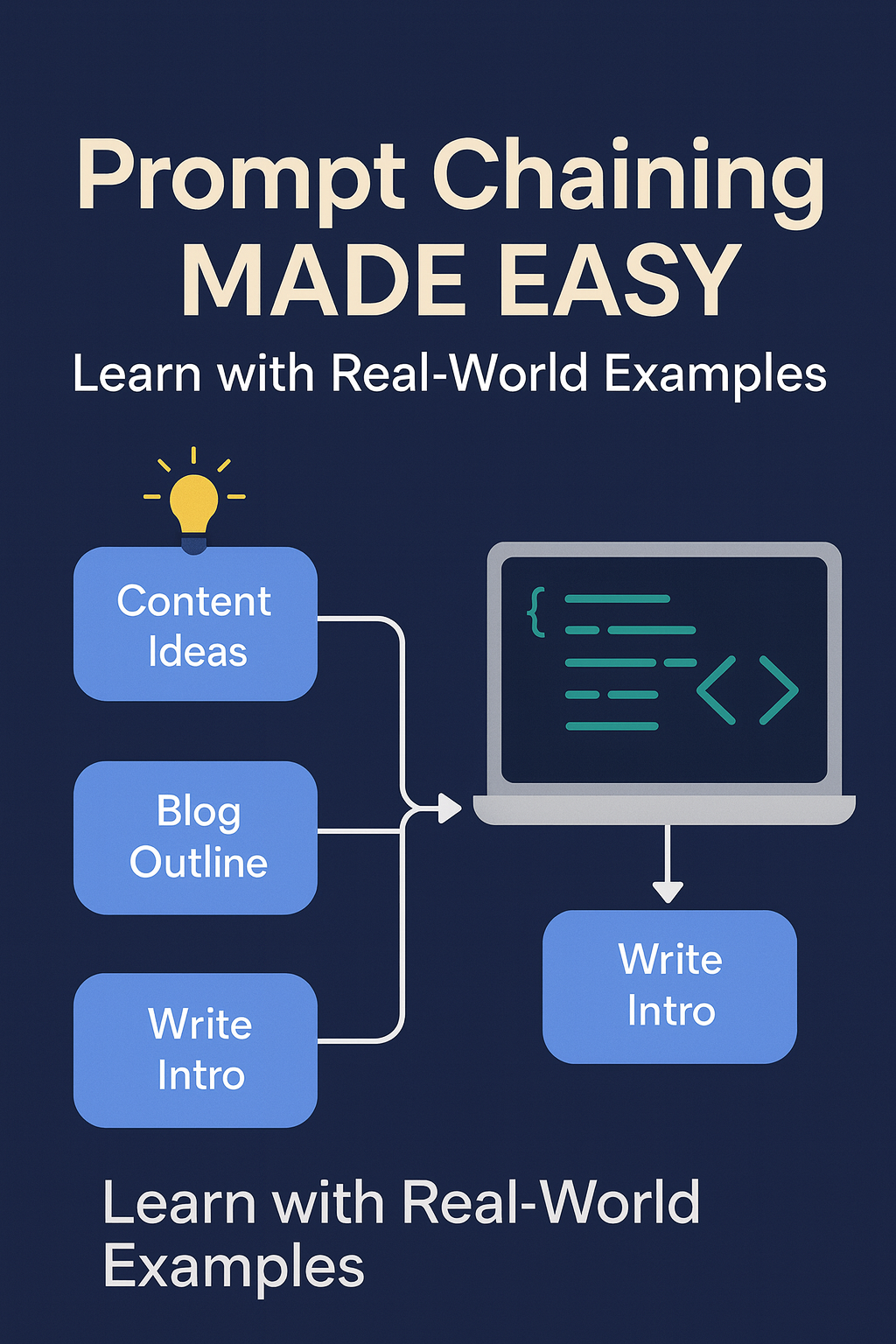Prompt chaining is one of the most powerful ways to get better, more structured results from ChatGPT and other AI models. Instead of asking one massive question, you break your request into smaller, connected steps — letting the AI build on each answer.
In this guide, you’ll:
- Understand what prompt chaining is.
- See a practical, real-world example.
- Build your own mini prompt chaining project.
- Explore a coding-focused chaining example for advanced workflows.
Along the way, I’ll share resources to help you level up, including 7 Proven ChatGPT Techniques Every Advanced User Should Know and ChatGPT for Beginners: 7 Easy Ways to Boost Productivity with AI.
🤔 What is Prompt Chaining?
Prompt chaining means linking multiple prompts together so the output of one becomes the input for the next.
Think of it like building with LEGO: each block (prompt) adds structure until you have a complete piece of work.
This helps when:
- You need complex results that are easier to create in stages.
- You want to refine output step-by-step.
- You’re creating repeatable workflows (e.g., research > outline > draft > edit).
Practical Project: Blog Post Generator with Prompt Chaining
We’ll create a 3-step workflow that takes a topic and turns it into a polished blog outline you can use.
Tools: ChatGPT (Free or Pro) + Google Docs or Notion
Step 1: Generate Topic Ideas
You are a content strategist. Give me 5 blog post ideas about AI productivity tools for small businesses.Step 2: Create an Outline from One Idea Take one idea from Step 1 and prompt:
Create a detailed blog post outline for this topic: [Insert chosen idea]. Include H2 and H3 headings.Step 3: Expand into Draft Sections For each section in your outline:
Write a 200-word draft for the section [Section Title]. Keep it clear and engaging.Optional Automation: Combine this with Zapier to automatically store each stage in Notion. If you’re new to automation, my guide How to Use ChatGPT and Zapier to Automate Your Content Calendar will walk you through it.
Advanced Example: Complex Coding Solutions with Prompt Chaining
Let’s solve a coding problem in stages: building a Python script that pulls weather data from an API and emails a daily report.
Step 1: Plan the Script
You are a senior Python developer. Outline the steps to create a Python script that fetches weather data from a public API and emails a daily summary.Step 2: Generate API Call Code From the outline, prompt:
Write the Python code for the API call to fetch weather data from OpenWeatherMap, given an API key and city name.Step 3: Add Email Sending Functionality
Using Python’s smtplib, write the code to send an email with the weather summary. Assume I have SMTP credentials.Step 4: Integrate and Test
Combine the API call and email functionality into a single Python script, ensuring error handling and clear comments.By breaking the problem into parts, ChatGPT can focus on each step, reducing mistakes and making debugging easier.
Tips for Better Prompt Chains
- Be specific: Each prompt should have a single, clear goal.
- Maintain context: Reference earlier answers when needed.
- Refine gradually: Don’t try to get the perfect result in one step.
📈 Why Prompt Chaining Works
By breaking tasks into stages, you:
- Reduce errors.
- Get more detailed, structured outputs.
- Can swap or edit individual steps without redoing everything.
🔗 Related Reading to Boost Your Skills
- Top 5 Free AI Tools You Can Start Using Today
- 10 Expert-Recommended Chrome Extensions to Maximize Productivity
- How to Use GPTs Like a Pro: 5 Role-Based Prompts That Work
Final Thoughts
Prompt chaining is a simple but game-changing technique that can take your AI results from “okay” to “outstanding.”
Try building the 3-step blog post generator or the Python weather script above, then customize them for your own needs.
The more you practice chaining prompts, the more you’ll see AI as a collaborative partner rather than just a Q&A tool.




I love this, I have learnt something new
It’s like you learn something new everyday, literally!
Thank you for your kind words. I’m glad you found it insightful—continuous learning really is a powerful thing.